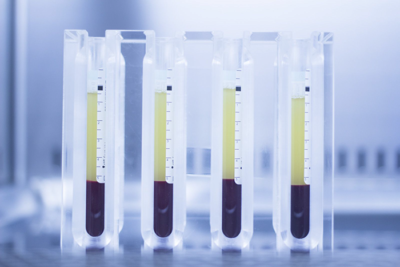At Rejuvence Clinic we have a huge amount of faith and belief in the merits of mesotherapy. Mesotherapy, for the purposes of facial rejuvenation, is not as popular in the UK as it is in continental Europe. However, this trend is slowly changing with the increasing popularity of platelet rich plasma (PRP). How does mesotherapy actually work and what do the various mesotherapy cocktails contain?
Mesotherapy is a technique that involves micro-injections of therapeutic substances such as hyaluronic acid into the superficial papillary dermis (deeper layer of the skin). In 2015, Dr Sergey Prikhnenko, based in Novosibirsk, Russia, published a review of the mesotherapy formulations used for the treatment of skin aging and improvement of skin quality.
Youthful skin consists of large amounts of three key components – collagen, elastin and hyaluronic acid. Collagen provides skin with it’s tensile strength. Elastin is arranged between the collagen and provides skin with its ‘snap back’ attributes. Hyaluronic acid provides skin with hydration and suppleness.
![]()
Fibroblasts represent the major skin type in the dermis and have a key role in producing and maintaining extracellular connective tissue, including collagen and elastin. This is crucial to maintaining the youthful appearance of the skin. Fibroblast dysfunction and a reduction in fibroblast biosynthetic activity are major factors involved in the skin aging process. Indeed aging results in decreased fibroblastic activity and subsequently a reduction in collagen, elastin and hyaluronic acid. However, despite dysfunctional fibroblasts in aged human skin, they still retain the capacity for functional activation. Effective mesotherapy cocktails reactivate fibroblasts and take their functional activity back to previous youthful levels.
For reactivation, fibroblasts must have sufficient supply of substrates (materials from which an organism lives, grows or obtains its nourishment) in order to perform their biosynthetic activity. Accordingly the ideal mesotherapy solutions contain ‘construction materials’ such as amino acids and nucleosides. These are used by the fibroblasts to start churning out new collagen, elastin and hyaluronic acid. Synthetic fibroblast reactions are energy consuming and hence fibroblasts must have sufficient energy generation potential. Hence skin anti-aging mesotherapy solutions should contain substances that create a favourable environment for optimal fibroblast cell function.
![]() At Rejuvence Clinic we combine Filorga’s NCTF 135HA mesotherapy formulation with the majority of our platelet rich plasma treatments. NCTF stands for New Cellular Treatment Factor and is recognised as an anti-aging mesotherapy product composed of 54+1 active ingredients that bring poly revitalisation and deep hydration to skin lacking brightness, tone and elasticity. Improvement of the skin is progressive and cumulative although results are visible from the first session. Skin is more hydrated and toned as it becomes progressively radiant and even. The skin is more restructured, more dense and firmer.
At Rejuvence Clinic we combine Filorga’s NCTF 135HA mesotherapy formulation with the majority of our platelet rich plasma treatments. NCTF stands for New Cellular Treatment Factor and is recognised as an anti-aging mesotherapy product composed of 54+1 active ingredients that bring poly revitalisation and deep hydration to skin lacking brightness, tone and elasticity. Improvement of the skin is progressive and cumulative although results are visible from the first session. Skin is more hydrated and toned as it becomes progressively radiant and even. The skin is more restructured, more dense and firmer.
Dr Prikhnenko critically appraised the effects of NCTF and its composition in his review article published in the Journal of Clinical, Cosmetic and Investigational Dermatology. He cited numerous authors who have previously carried out experiments using NCTF specifically, and subsequently confirmed significant increases in fibroblast activity as well as an increased ability of fibroblast cells to resist oxidative stress – a byproduct of normal cellular activity. What does NCTF actually contain and what do these various components aid fibroblast activity in improving aging skin?
NCTF 135HA consists of 13 vitamins. These vitamins include Vitamin C, Vitamin A, Vitamin E, Inositol, Vitamins B1, B2, B3, B5, B6, B7, B9 and B12.
Vitamin C, also known as Ascorbic Acid, is an important antioxidant and speeds up DNA synthesis thereby increasing collagen synthesis. Vitamin A, otherwise known as Retinol, also has antioxidant effects. It also helps to regulate regeneration of the epidermis (upper layer of the skin), controls and restricts sebum production and assists in the synthesis of collagen. Vitamin E, known as Tocopherol, in addition to antioxidant effects, controls skin physiological regeneration and is pivotal in initiating the repair process in damaged skin.
Inositol is a vitamin-like substance used by cells as a signalling molecule and contributes to the regulation of cellular activity.
The B vitamins such as thiamine (B1), riboflavin (B2), nicotinamide (B3), and pantothenic acid (B5) are all involved in energy generation and the delivery of energy to the treated cells. Much of this energy generation is from carbohydrates, fat and proteins. They directly affect cellular synthetic function. Vitamin B6 (pyridoxine) is key to the cellular metabolism of amino acids as well as assist in the transfer of amino acids through cell membranes into cells. Biotin (B7), folic acid (B9) and cyanocobalamin (B12) are also all involved in the metabolism of protein, fat and carbohydrates and subsequently aid with energy generation and DNA and RNA synthesis.
NCTF 135HA contains a series of amino acids that are essentially the building blocks of proteins and required as substrates for fibroblasts to build dermal extracellular matrix proteins – specifically collagen. Irrespective of the number of brick layers on a building site, without a supply of bricks no building can occur.
Calcium, phosphate and magnesium are minerals found in NCTF. They aid in regulating normal cellular functioning, cell wall generation and maintain normal functioning of critical enzymes. Nucleosides are the building blocks of DNA and RNA and required for effective fibroblastic function. NCTF also consists of a ready made supply of co-enzymes for fibroblasts. Fibroblasts are able to generate their own co-enzymes but this requires time and energy. NCTF mesotherapy solution provides fibroblasts with a ready made supply and hence speeds up a return to youthful levels of synthetic activity.
Glutathione is recognised as a very efficient antioxidant and is contained in NCTF. They serve to form parts of enzymes that are able to neutralise free radicals and other harmful compounds that are formed as a result of uncontrolled oxidative processes.
![]() Finally NCTF mesotherapy solution contains plentiful supply of pure hyaluronic acid. Hyaluronic acid is known to be an integral component of youthful and healthy skin, especially with it’s ability to accumulate and retain 1000 times its weight of water. The result of this is skin remains hydrated, as well as providing anti-inflammatory, anti-bacterial, anti-fungal and antioxidant properties.
Finally NCTF mesotherapy solution contains plentiful supply of pure hyaluronic acid. Hyaluronic acid is known to be an integral component of youthful and healthy skin, especially with it’s ability to accumulate and retain 1000 times its weight of water. The result of this is skin remains hydrated, as well as providing anti-inflammatory, anti-bacterial, anti-fungal and antioxidant properties.
As with most aspects of aesthetic medicine there is limited scientific evidence regarding overall efficacy for mesotherapy. At Rejuvence clinic we pride ourselves on providing treatments for facial rejuvenation that have a sound evidence base with proven effects and results. Of those studies that have been conducted, numerous authors have shown beneficial results with NCTF 135HA. Indeed Filorga Lab published the results of a trial conducted amongst 40 subjects treated with NCTF. Each subject received 5 treatment sessions with NCTF spaced 2 weeks apart. Improvements were demonstrated in skin glow, hydration, wrinkles, fine lines and skin tone with high levels of patient satisfaction. In addition authors have demonstrated significant increases in fibroblastic activity following treatment with NCTF. Indeed one author identified an increase in collagen production ranging from 165% to 256% following treatment with NCTF. In addition, as stated above, there was no significant difference in synthetic activity, between fibroblasts derived from youthful skin and those from aged skin.
![]() At Rejuvence Clinic we take great care to use the best mesotherapy solutions to incorporate into our treatments and that’s why our first choice is Filorga’s NCTF 135HA. Filorga have developed a complete mesotherapy solution that consists of vitamins, minerals, amino acids, nucleosides and hyaluronic acid that is all combined together to ensure optimal working environments for fibroblastic reactivation in aged skin. By combining this with cutting edge platelet rich plasma technology, we are able to provide clients with unique regenerative medicinal options for facial rejuvenation. This can be extended to the treatment of different forms of hair loss, scarring, and even erectile dysfunction. These treatments, however, cannot be effective as a one off and their full effects are cumulative and hence clients are required to have a series of treatment sessions to truly benefit. For further information please visit our website and call to book a free consultation at: https://www.RejuvenceClinic.co.uk.
At Rejuvence Clinic we take great care to use the best mesotherapy solutions to incorporate into our treatments and that’s why our first choice is Filorga’s NCTF 135HA. Filorga have developed a complete mesotherapy solution that consists of vitamins, minerals, amino acids, nucleosides and hyaluronic acid that is all combined together to ensure optimal working environments for fibroblastic reactivation in aged skin. By combining this with cutting edge platelet rich plasma technology, we are able to provide clients with unique regenerative medicinal options for facial rejuvenation. This can be extended to the treatment of different forms of hair loss, scarring, and even erectile dysfunction. These treatments, however, cannot be effective as a one off and their full effects are cumulative and hence clients are required to have a series of treatment sessions to truly benefit. For further information please visit our website and call to book a free consultation at: https://www.RejuvenceClinic.co.uk.

